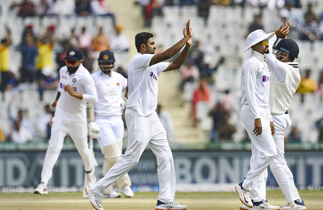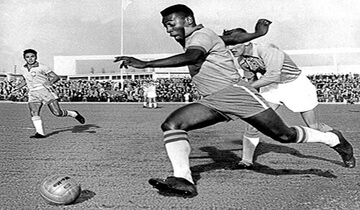Cricket is al eeuwenlang een favoriet tijdverdrijf en veel van de meest gekoesterde tradities zijn vandaag de dag nog steeds sterk aanwezig. Een van de meest herkenbare aspecten van het spel is 'de over'. Het begrijpen van een 'over' is essentieel om de sport echt te waarderen.
Wat is een over in cricket?
Een over in cricket is een speleenheid die bestaat uit zes opeenvolgende ballen gebowld door dezelfde bowler. Als alle zes ballen zijn afgeleverd, betekent dat het einde van de over en begint er een nieuwe met een andere bowler. Deze fundamentele eenheid van het spel zorgt voor een gestructureerde en eerlijke competitie tussen de batsmen en de bowlers. Het is een fundamenteel element dat ervoor zorgt dat het spel op een georganiseerde en strategische manier verloopt.
De invloed van Over op het spel
Een over kan strategisch gebruikt worden door het bowlingteam. Als een batsman moeite heeft om runs te scoren tegen een bepaalde bowler of het moeilijk vindt om een bepaald type delivery onder ogen te zien, kan het bowlingteam ervoor kiezen om dezelfde bowler in opeenvolgende overs te houden om druk op de batsman te houden. Aan de andere kant kan het battingteam proberen de slag te rouleren door runs te scoren op verschillende bowlers binnen een over om de plannen van de tegenstander in de war te sturen. Het strategisch gebruik van overs speelt een belangrijke rol in het vormgeven van de dynamiek van het spel en de strategieën die beide teams gebruiken.
Voltooiing van een Over
De voltooiing van een over wordt bepaald door het afleveren van zes ballen door de bowler. Als alle zes ballen gebowld zijn, geeft de umpire het einde van de over aan. Dit betekent een overgang in het spel, zodat de teams hun strategie opnieuw kunnen evalueren en de nodige aanpassingen kunnen doen voor de volgende over. Het is ook een gelegenheid voor de spelers en toeschouwers om na te denken over de geboekte vooruitgang en te anticiperen op de gebeurtenissen die in de volgende over zullen plaatsvinden.
Anticipatie op de volgende Over
De wisseling van over brengt een gevoel van anticipatie en opwinding teweeg in een cricketwedstrijd. Als een nieuwe bowler de bal neemt, bereiden de batsmen en het fielding team zich voor op een nieuwe uitdaging. Het biedt een kans voor het bowlingteam om een nieuwe aanpak te introduceren, de batsmen te verrassen en mogelijk partnerships te breken. Op dezelfde manier ziet het battingteam de verandering van bowler als een kans om te profiteren van mogelijke zwakheden en vrijer runs te scoren. De overgang tussen overs zorgt voor hernieuwde energie in het spel en houdt de toeschouwers betrokken.
Scoren in cricket
Het scoren van runs is een fundamenteel doel voor het battingteam in cricket. De batsman kan runs scoren door de bal te slaan en runs tussen de wickets te voltooien of door boundaries te slaan. Als de batsman de bal slaat en de bal gaat over de boundary zonder aangeraakt te worden door een veldspeler, dan wordt dat beschouwd als een boundary en krijgt de batsman vier of zes runs toegekend, afhankelijk van de plaats waar de bal de boundary passeert. Het scoren van runs vereist een combinatie van vaardigheid, timing en plaatsing, en de batslieden proberen hun runscoringskansen binnen elke over te maximaliseren.
Conclusie: De opwinding van een over in cricket
Samengevat is de over een cruciaal element in een cricketwedstrijd. Het verdeelt het spel in beheersbare eenheden en maakt strategische besluitvorming door beide teams mogelijk. Elke over biedt een nieuwe uitdaging en een kans voor de spelers om hun vaardigheden en tactieken te laten zien. Het draagt bij aan de opwinding en anticipatie van cricketliefhebbers over de hele wereld. Dus, de volgende keer dat je cricket kijkt of speelt, let dan goed op elke over en de impact ervan op het spel!







































